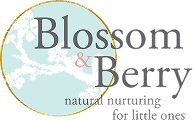Helping toddlers work through emotions with love
Toddler tantrums are a rite of passage as your little one grows up. As his/her brain develops there are new emotions to process and toddlers need to work out where they fit into world. Frustration can cause toddlers to feel overwhelm and stress. Responding to your toddler with love during this time is very important to help him/her regulate his emotions. Your toddler looks to you to help make sense of his/her feelings particularly before the age of 18 months. Although at times it can be frustrating as a parent to cope with mood swings and differing temperaments, it’s important to remember that your actions teach your child about the world. It can be useful to imagine what it might be like to be in your toddler’s shoes and give him/her the support you would want in that situation.
Nurturing touch and massage can be a great way to connect with your toddler and help get the relaxation hormones flowing if he/she has been upset or frustrated. With older babies and toddlers, massage will have to be very flexible and strokes changed and adapted. This is because it can be difficult to keep little ones still and in one place for a long time. The key is to be relaxed and do whatever your child wants you to do. As your child matures you will find it much easier to do the whole massage routine as he will have a longer concentration span and a greater understanding of massage.
Here are some tips on how to get started;
The golden rule is:
Follow the lead of your child, have fun and be flexible.
Even if you only manage to do five minutes massage with your child this will be beneficial. Your child will soon recognise and enjoy the benefits of massage and want to join in. It’s a good idea to start with a simple foot massage as this will be easy to introduce to your toddler and will still get the “feel good hormones” flowing. Start by gently stroking the sole of the foot with your thumbs from heel to toe. You can roll each toe and sing a song as you go. Massage around the ankle in circles is also great to relieve any tension from lots of running around and jumping. A good spot to focus on if your toddler is tense is the centre of the sole of the foot. You can gently press here to help relax him/her.
Precautions
There are some occasions where it is not advisable to massage your child. If your child is unwell, has vomiting, fever or diarrhea, is receiving medical treatment, has been immunised in the last 72 hours or if you have any concerns about your child’s health, then contact your local GP or health visitor before undertaking a massage. Once your child is out of nappies, leave your child’s underwear on when massaging.
Talk to your child
It is really important to ask your child if the wants a massage before you begin because it gives him the opportunity to consider if he wants a massage and it also shows you care about, and respect your child’s opinion. You know your child better than anyone and if he does not want a massage then leave it to another time. You could try at bedtime or whilst the child is in the bath. All children love gentle, safe and positive touch and will be interested in finding out about massage.
Finding the right time
Try different times of the day for massage; bedtime, story time, cuddle time, when your child is upset or when they want to play.
Enjoy yourself!
The experience should be a fun one that you share together. You can use different songs,toys and games at home to continue to develop new routines. Follow your instincts. Massage comes from our natural desire to connect on a physical level and to nurture each other. Use long, flowing strokes on the soft tissue of the body and you can’t go wrong. Add in a story to make the routine easy to remember and part of a bedtime routine.
For more information on using massage with toddlers, have a look at our Learn Stretch & Play course on our website here

